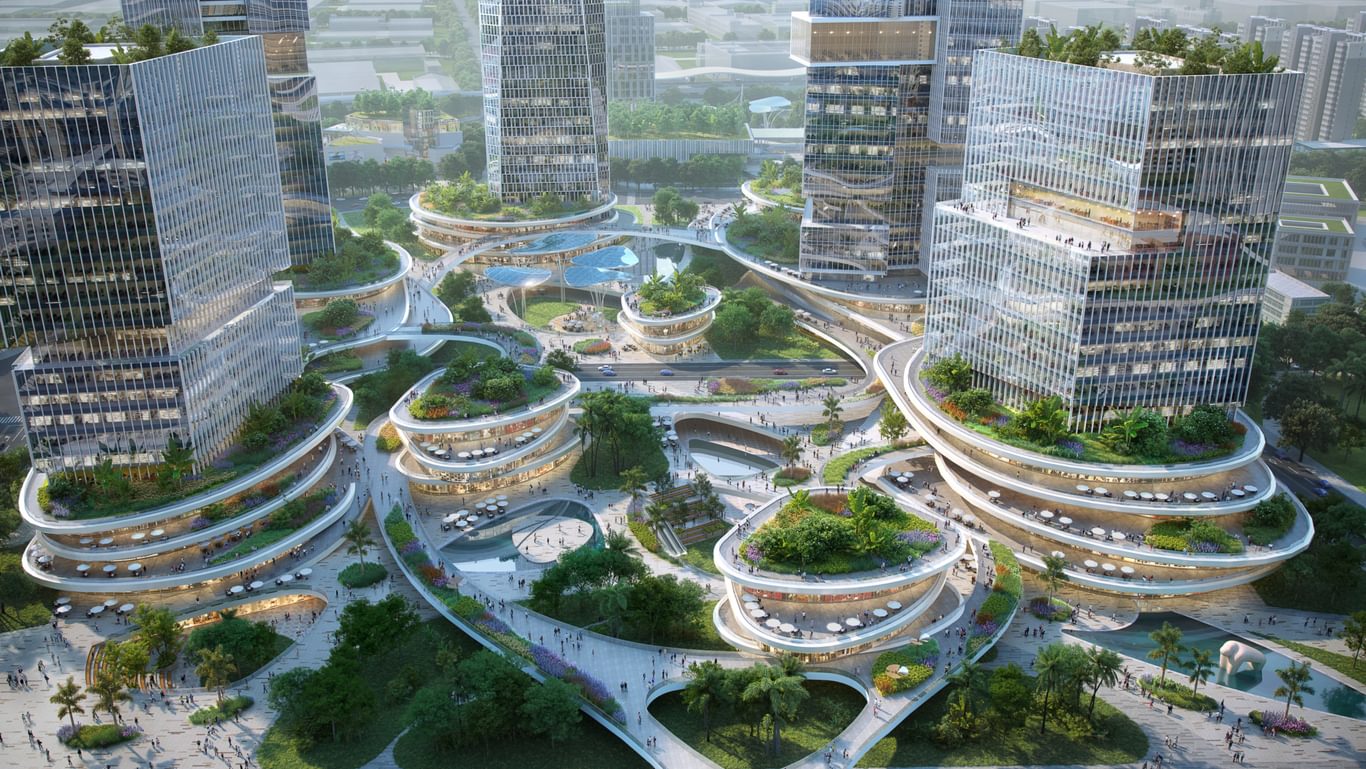
Vertical Cities in China
Chief architect and urban designer, Charlene Zha, from Chapman Taylor’s Shanghai studio masterplanning team, outlines approaches to create vertical cities that are sustainable and focused on the needs of the people that inhabit them.
Since the 1980s China’s economy has seen dramatic growth, leading to rapid urbanisation. This has led to a substantial increase in the standard of living and a marked decline in poverty. But the incredible growth of the urban infrastructure has led to many challenges in the city environment such as uneven distribution of public services, development of agricultural land and major environmental pollution. Vertical city planning is a way to meet the increasing needs of a more prosperous population and assist in reducing over development of the land. In recent years in China a vertical city strategy has been promoted in the design of public transport hubs, commercial centres and even residential communities.
To build a vertical city it’s important to consider all the elements that make up a city. In addition to the three-dimensional planning of roads, utilities, underground logistics systems and other urban facilities, the quality and efficiency of the city must be enhanced with extensive public transportation and other services. Most importantly, we need to conduct thorough research on how to arrange and stack three-dimensional spaces to sustainably improve the urban environment.
Diverse and well-proportioned urban space
The vertical city has a different pattern than traditional cities as it extends its spaces both above and below the ground. It utilises sky corridors, sunken plazas, layered buildings and elevated levels to form well-organised spaces, strengthening multiple connections between the city spaces and the buildings at many levels. A mix of uses is introduced to the vertical structure to enliven the environment and make the city feel truly vibrant and attractive.
Clear transport circulation
Cities that are experiencing rapid growth face a variety of challenges, such as traffic congestion. The unified planning of the metro system and other transportation strategies can greatly improve the integration and efficiency of the urban transport road network.
Over the last few years, with rapid urbanisation and the construction of many high-speed railway stations, the integration of the stations with the city has become a catalyst for the improvement of city planning. With the main transport hub at its heart, a dynamic, mixed-use urban centre can be created.
This centralisation requires a new type of planning structure and a spatial form arrangement that effectively combines landscape, public space and commercial streets with the station functions, to eliminate urban fragmentation.
The integration of the stations with the city has become a catalyst for the improvement of city planning
Underground space
The effective utilisation of the below-ground spaces is an essential component of the vertical city. Priority should be given to the introduction of natural light and ventilation, and a sense of openness. In addition, the zoning and planning strategies must also take into account the management and ownership of the buildings above and below ground.
It is necessary to consider the underground space in a holistic manner at the early stages of planning, to determine the development principles of each site within a masterplan and how they interlock to create a cohesive urban structure.
Pedestrian spaces below ground level should be connected to assist convenient urban living and create a pleasant environment that is weather-protected. Microclimatic spaces can be created in underground shopping streets and sunken plazas. Creating active open spaces in busy areas can also improve pedestrian safety, as well as introduce more pleasurable and dynamic experiences.
Vibrant urban space
The three-dimensionality of the vertical structure is a significant means of achieving land use intensification, introducing public space both above and below ground level. It frees up ground space for the increasing diversity of future public transportation systems and vehicles and increases the accessibility of the city.
However, it’s important to note that the large span structures, pedestrian sky bridges and connected building functions inevitably introduce visual disturbance to the ground space. It is important that the vertical city elements are appropriately designed in order to meet the needs of connection without compromising the quality and human scale of the urban streetscape.
The most important element of a city is the quality of life of its people, so the pedestrian experience and the ecological integration are the most intuitive expression of the city's image. In a vertical city the landscape above and below ground should be an organic whole, which is not only reflected in green roofs or landscape platforms but should also include the type of planting and the direction of sunlight, to improve adaptability and sustainability.
In addition, working with sponge city principles, rain gardens can be created using low depressions, stacked roof gardens can reduce indoor energy consumption and underground rainwater collection can be unified and centralised for grey water reuse.
--
The "vertical city" encompasses all of the functions of the city and is, in our opinion, one of the key components of the urban form of the future Chinese city. With the rapid development of modern cities, the vertical city, with its emphasis on efficiency, intelligence, comfort, connection and sustainability, may lead to a new era of urban planning.




